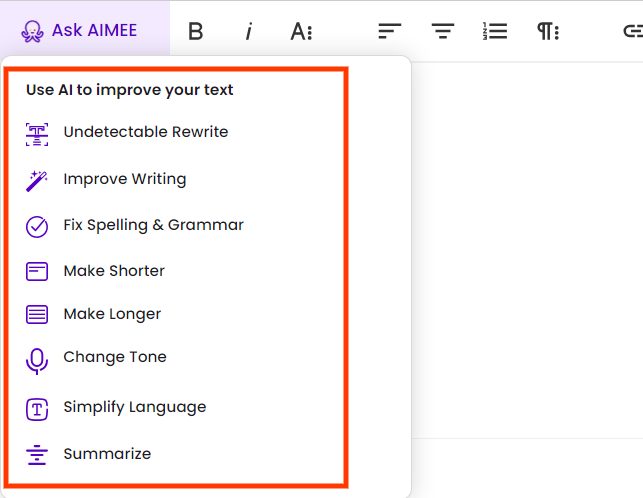Discover top guides, trends, tips and expertise from AIO Writers
How to Avoid Plagiarism and Write With Integrity
Julia McCoy
Wednesday, 10th Apr 2024
Ever had that sinking feeling when you realized you might have accidentally plagiarized someone else’s work?
We’ve all been there!
Whether you’re a seasoned writer, a student working on a paper, or just someone trying to share ideas online, plagiarism is a big no-no.
In this blog post, we’re diving into how to avoid plagiarism and write with integrity. From citing sources properly to crafting original content that’s all your own, we’ll cover practical tips to help you stay on the right side of academic and ethical standards.
Let’s make sure your ideas shine bright without stepping on anyone else’s toes!
Table Of Contents:
- What Is Plagiarism and Why Does It Matter?
- How to Avoid Plagiarism in Your Writing
- FAQs: Plagiarism
- Conclusion
What Is Plagiarism and Why Does It Matter?
According to Dictionary.com, plagiarism is “an act or instance of using or closely imitating the language and thoughts of another author without authorization and the representation of that author’s work as one’s own, as by not crediting the original author.”
In other words, plagiarism is a form of intellectual theft. It’s passing off someone else’s work as your own.
This can include copying and pasting text, using information without citing the source, or even just rewording something without attribution.
Plagiarism is a big deal in the academic world. It raises questions about the integrity of the student’s work and can lead to failing grades or even expulsion.
In content marketing and SEO, plagiarism is a major turn-off because it can:
- Destroy trust
- Dilute content quality
- Penalize websites
- Violate copyright laws
How to Avoid Plagiarism in Your Writing
Plagiarism isn’t always intentional. Sometimes it happens when you forget to cite a source or don’t know how to paraphrase properly.
So how can you avoid plagiarism?
- Write down all the resources you used during your research.
- Paraphrase in your own words.
- Quote sparingly.
- Always acknowledge the original author in both your reference list and in-text citations.
- Run a plagiarism scan before submitting your work.
- Get help from university writing centers.
- Make sure your AI tool writes natural content.
- Develop original ideas.
Let’s break down these eight steps so you can protect your academic integrity and produce original work you’re proud of.
1. Write Down The Resources You Used During Research
Keep a detailed record of all the sources you consulted during your research, whether it’s books, articles, websites, or any other materials.
Note down the author’s name, title of the work, publication date, and any other relevant information that will help you cite the source accurately later.
On your first draft, clearly label the ideas or claims that you did not write yourself, highlight sentences or paragraphs that need citations, and mark any text that you copied directly from a source with quotation marks.
2. Paraphrase in Your Own Words
When you find information that you want to include in your work, paraphrase it rather than copying it verbatim.
You can use a paraphrasing tool to rewrite an author’s ideas while retaining the original meaning.
But as Plagiarism.org says, “paraphrasing without citing the original author is still considered plagiarism.”
When paraphrasing, make sure you fully restate the idea in your own original words. Just swapping out a few synonyms isn’t enough to make it your own.
Summarizing is a similar skill. Condense the main points of a larger work into a shorter overview, using your own words and sentence structure.
Need to rewrite a large volume of text quickly? BrandWell‘s AIMEE chatbot can help! Here are some of the tools you can use for paraphrasing or summarizing content:

3. Quote Sparingly
Direct quotations should be used sparingly and only when the original wording is crucial and bolsters your argument.
Here are some specific instances when it is appropriate to quote a text word for word:
Capturing Specific Language or Terminology: When the original text uses specific language, terminology, or phrasing that is integral to your discussion or analysis, quoting ensures accuracy and preserves the author’s intended meaning.
Providing Evidence or Support: Use quotes to provide evidence or support for a point you are making. Direct quotations can strengthen your argument by showing that your interpretation is grounded in the source’s authority or expertise.
Comparing Interpretations: Quoting is useful when you want to compare different interpretations or analyses of the same passage or text, allowing readers to directly see the variations in wording or emphasis.
Historical or Cultural Significance: When discussing texts of historical or cultural significance, quoting can lend authenticity and reverence to your analysis by directly referencing the original words.
Legal or Contractual Contexts: In legal or contractual writing, quoting is often necessary to cite laws, regulations, or specific contract terms accurately and precisely.
To avoid plagiarism when quoting a source, always enclose the text in quotation marks and provide proper attribution.
Be mindful of citation style guidelines (APA, MLA, Chicago) to format quotations correctly.
4. Follow Proper Citation Techniques
Whenever you quote, paraphrase, or use an idea from another source, always give credit to the original author by acknowledging them in a footnote or in-text citation as well as the reference list or bibliography at the end of your paper.
Proper citation is one of the most straightforward ways to avoid plagiarism.
Different fields use different citation styles like MLA, APA, or Chicago. Consult the appropriate style guide and be consistent in your formatting.
Most universities have online guides for the major citation styles, with examples of how to format references for different types of sources. The Purdue Online Writing Lab is one of these comprehensive resources.
5. Run a Plagiarism Scan
Plagiarism checkers compare your writing to a database of sources to identify any matching text. They can help you catch accidental plagiarism before submitting your work.
If you’re looking for free plagiarism checkers, one of the best out there is the AI-powered BrandWell Plagiarism Checker.
To start checking for plagiarism, you can either paste a piece of text, enter a URL, or upload a document file.
After clicking the “Check Plagiarism” button, the AI will scan your content and provide you with a report.
If you’re already using BrandWell’s RankWell SEO writer to create content, you don’t need a separate plagiarism detection tool to check for plagiarism. On the right column of the RankWell dashboard, click the Research button and run a plagiarism scan while you are optimizing your AI-generated blog post.
Every time you are submitting a paper or publishing content, always run your text through a plagiarism checker like BrandWell to double-check your paraphrasing and citations.
6. Get Help From University Writing Centers
Most campuses have a writing center where you can get individualized help with essays, citations, and avoiding plagiarism. Tutors can look over your drafts, answer questions, and give feedback on paraphrasing and source integration.
It’s a great place to get expert advice and grow your writing skills. Plus, it’s usually a free service for enrolled students. Check your university website to book an appointment.
7. Use An AI Writer That Generates Undetectable Content
If you opt to use ChatGPT or another AI writing tool to generate content, exercise caution.
While AI tools can help you brainstorm ideas and even write an actual essay or blog post, be aware that their outputs may be detectable by plagiarism detection software.
If you’re going to write with AI, choose BrandWell. Built with long-form SEO in mind, it’s designed to create natural-sounding, original content that can be checked with plagiarism and AI detection tools as part of your workflow.
As an added layer of protection, be sure to review any content that is produced by AI and cite sources if necessary. AI tools are designed to help augment your creativity, not substitute for your own critical thinking and writing.
8. Develop Original Ideas
At the end of the day, the best way to avoid the consequences of plagiarism is to think for yourself. Do your research but use sources to support and enhance your original arguments.
Ask yourself questions, look for new connections, and explore ideas from multiple angles. The more you engage critically with a topic, the easier it will be to develop your own unique perspective.
FAQs: Plagiarism
Is it plagiarism if you paraphrase?
Paraphrasing is not plagiarism as long as you rewrite the original text in your own words and properly cite the source.
Failing to attribute the source, however, constitutes plagiarism.
Is it plagiarism if I cite?
Citing your sources properly avoids plagiarism, as it gives credit to the original authors for their ideas and work.
However, ensure that your citations are accurate and complete to maintain academic integrity.
Can I copy and paste if I cite?
Copying and pasting text is acceptable if you properly cite the source and use quotation marks to indicate direct quotes. Without these, even with a citation, it can still be considered plagiarism.
Is poor paraphrasing plagiarism?
Yes, poor paraphrasing that closely mimics the original text without proper citation is considered plagiarism, as it fails to represent the original source’s ideas in your own words.
Proper paraphrasing involves significant rephrasing and accurate citation.
What is the 5-word rule for plagiarism?
The 5-word rule suggests that using five or more consecutive words from a source without proper citation can be considered plagiarism.
Always cite sources and use quotation marks for direct excerpts.
Conclusion
Avoiding plagiarism is crucial for maintaining academic and brand integrity. When you properly cite sources and acknowledge others’ contributions, you’re showing respect for their work.
Plus, it adds credibility to your own writing. Readers can see that you’ve done your research and are building upon existing knowledge.
So while it may be tempting to take shortcuts, plagiarism just isn’t worth the risk. It’s always better to do the work and give credit where it’s due.
To ensure your stories are written from an authentic place, always use a plagiarism detector before handing in your work.

UNLOCK YOUR POTENTIAL
Long Headline that highlights Value Proposition of Lead Magnet
Grab a front row seat to our video masterclasses, interviews, case studies, tutorials, and guides.



